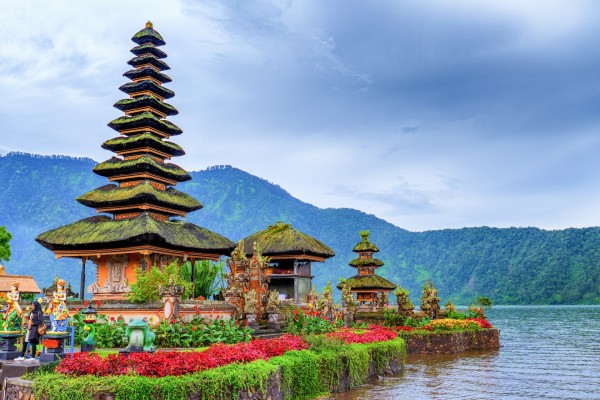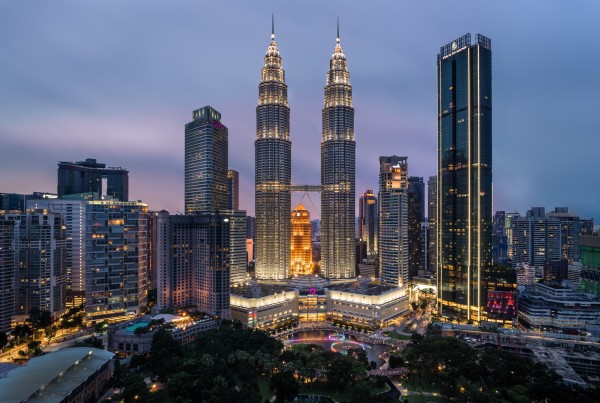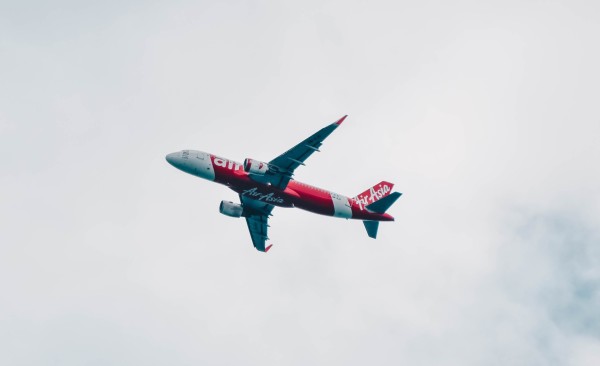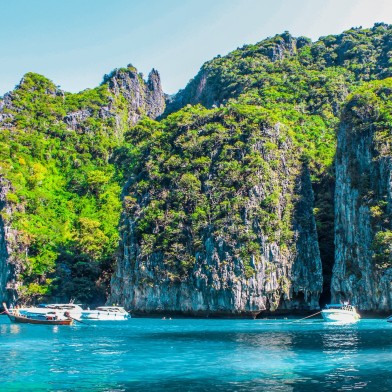Published earlier this year, the 2023 Global Muslim Travel Index forecasts that 230 million Muslim travellers worldwide will spend USD225 billion annually by 2028.
In early June, the Malaysian and Indonesian media each claimed the title of the “World’s Most Muslim-friendly Destination” for their country. The timing marked the publication of the 2023 Mastercard-CrescentRating Global Muslim Travel Index, which evaluates 138 countries across key aspects of the travel experience for Muslim tourists. This year, Malaysia and Indonesia – neighbouring Muslim-majority countries in South East Asia – scored equally to share the number one ranking.

A temple in Bali - Indonesia is one of the top destinations for Muslim travellers. Image: Mahmud Ahsan on Unsplash
Regional rivalry between Malaysia and Indonesia highlights the rising profile of Muslim tourism, and competition to attract visitors whose travel plans align with certain faith-oriented criteria. Globally, the Muslim travel market is enjoying a strong rebound after the pandemic. “In 2022, there were 110 million Muslim visitors accounting for 12% of all international arrivals,” says Fazal Bahardeen, Founder & CEO of Singapore-based CrescentRating, which publishes the Global Muslim Travel Index and a range of themed halal travel reports.
With pandemic travel restrictions receding into the distance, those 110 Muslim travellers in 2022 represented 68% of the 2019 total. “This was a really strong recovery,” says Bahardeen. “Our forecast for 2023 is 140 million, with a full recovery to the 2019 level of 160 million in 2025.”
Further dynamic growth is expected across the second half of the decade. “Our projection is that Muslim visitor arrivals will reach 230 million by 2028, with an estimated expenditure of USD225 billion,” he says. “This underlines the economic significance of Muslim travel and its potential to contribute to the global travel industry’s recovery and growth.”
Measuring Changes in Halal Travel
Measuring and comparing development across the travel chain is vital for supporting meaningful growth for the tourism industry. It also helps Muslim travel consumers make informed choices, says Bahardeen. In addition to providing destinations with competitive benchmarks to improve their own tourism services, it highlights emerging trends and patterns of consumer behaviour.
Expansion of the annual Global Muslim Travel Index – which is co-published by CrescentRating, a global consulting and accreditation firm for halal-friendly travel, and Mastercard – mirrors the growth and diversification of halal travel in recent years.

Malaysia (pictured) and Indonesia often compete for the top destination for Muslim travellers. Photo by Esmonde Yong on Unsplash
Bahardeen originally conceived the idea in 2011. The first report analysed the top 10 destinations for Muslim tourists. In 2023, the 82-page Global Muslim Travel Index evaluates 138 countries on all continents across four key aspects of the travel experience:
- Ease of access from the top 30 Muslim travel outbound markets, including visas and transport infrastructure
- Destination marketing and communications
- Environment, incorporating climate, safety and sustainability
- Services, attractions and experiences.
This year, Indonesia and Malaysia, which have long been popular destinations for Muslim tourists, share the number one ranking. Saudi Arabia, UAE and Turkiye occupy the top five spots, and Qatar, Iran, Jordan, Bahrain and Egypt complete the top 10.
Perhaps unsurprisingly, Asian, Middle Eastern and North African nations dominate the top 20. The UK is the highest ranked country outside of those three regions in joint 20th place. Germany and Spain share 36th spot, Australia and the US are joint 40th and New Zealand ranks 60th on the list.
Three ‘Billion People Markets’
As travel patterns further evolve after the disruption of Covid-19, destinations and travel providers in Asia Pacific are carefully assessing developments in a trio of mega-markets. “There are three ‘billion people markets’,” says Bahardeen. Each of these will contribute to shaping the future of travel. India and China both count populations of more than 1.4 billion people. The Muslim population is far greater, currently around two billion – albeit dispersed across borders and continents – and represents around 25% of the global population.

Demand for travel is rising post-Covid and Muslim travellers make up a valuable portion of tourist numbers for intra-Asia travel. Photo by Isabel Lee on Unsplash
This presents a psychological challenge for the travel industry. Tourism boards and service providers historically target their promotions towards consumers in defined country markets. This playbook doesn’t apply to Muslim travel. However, the pandemic’s long and destructive impact is forcing travel marketers to stretch their budgets and diversify their inbound mix.
Asia is a global hub of Muslim tourism. In 2022, 31% of all travellers to the region identified as Muslim. “Intra-Asian travel has a strong trend towards short-haul regional travel, and destinations are catering to that,” says Bahardeen.
Some destinations in Asia are now placing more attention into their readiness for Muslim tourists – possibly because they were closed for longer, says Bahardeen. “South East Asia in general is more Muslim friendly because of the population mix, as more than 40% of people in the region are Muslims. Beyond that, places like Taiwan and Hong Kong continued talking during the pandemic about attracting the Muslim market.” However, he believes than Middle Eastern countries and Turkiye “are making greater strides” than countries in Asia.
Communication is Key
Outside of the major Muslim-friendly markets, CrescentRating has recently developed halal tourism guides and information resources for cities such as New York and Malaga, and is working on a strategic project with Uzbekistan’s national tourism organization.
Opportunities exist for Australia and New Zealand, which are viewed as aspirational and adventurous destinations for Muslim travellers. Both Tourism New Zealand and Tourism Australia have a Halal Tourism section on their websites.
“Australia and New Zealand have been developing their halal travel eco systems for several years, but they have not yet been communicating their services internationally to the same degree as places like Taiwan and Hong Kong,” says Bahardeen.
Part II of this article will address some emerging trends in halal travel, including culinary tourism, cultural immersion and the influential role of female travellers.
- Asia Media Centre


